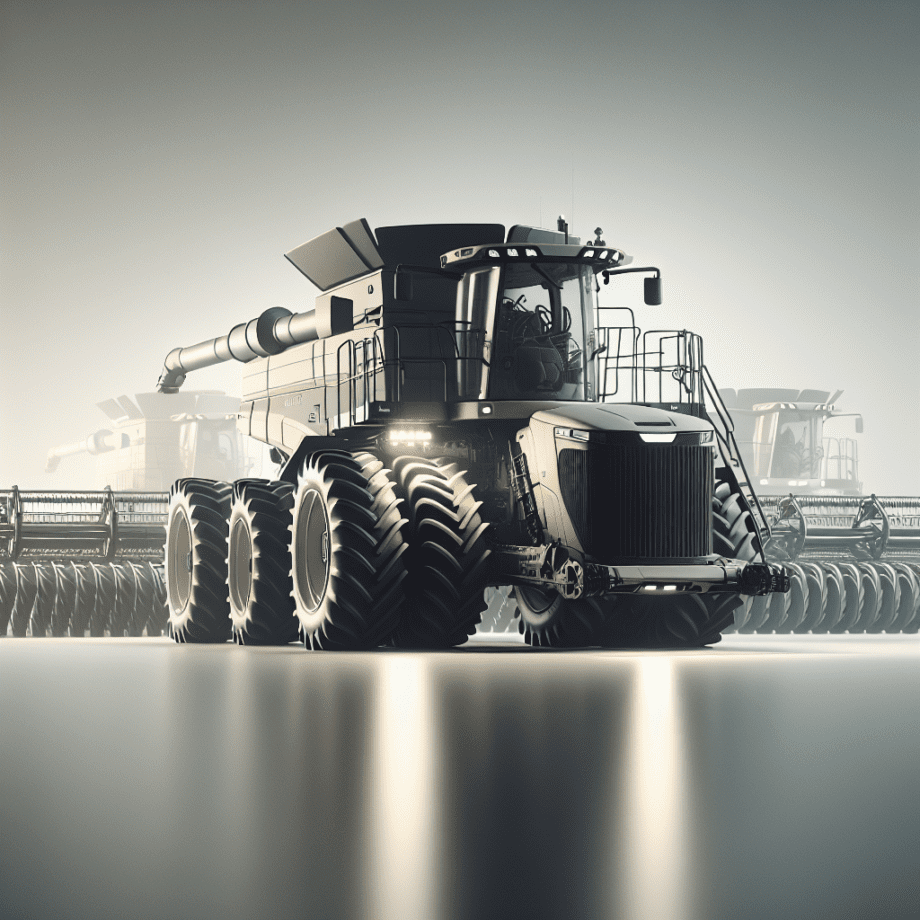Heavy-duty machinery plays a crucial role in large-scale farming operations, enabling farmers to manage extensive fields efficiently and effectively. This article delves into the various types of heavy-duty agricultural machinery, their applications, and the technological advancements that are revolutionizing the farming industry.
Types of Heavy-Duty Agricultural Machinery
Large-scale farming operations require a diverse range of machinery to handle different tasks, from soil preparation to harvesting. Below are some of the most essential types of heavy-duty agricultural machinery:
Tractors
Tractors are the backbone of any large-scale farming operation. They are versatile machines used for a variety of tasks, including plowing, tilling, planting, and hauling. Modern tractors come equipped with advanced features such as GPS navigation, automated steering, and real-time data monitoring, which enhance their efficiency and precision.
Combine Harvesters
Combine harvesters are indispensable for large-scale grain farming. These machines combine three essential harvesting operations—reaping, threshing, and winnowing—into a single process. This not only speeds up the harvesting process but also reduces labor costs and minimizes crop loss.
Seeders and Planters
Seeders and planters are specialized machines designed to plant seeds at precise depths and intervals. They ensure uniform seed distribution, which is critical for optimal crop growth. Advanced models are equipped with sensors and software that adjust planting rates based on soil conditions and other variables.
Sprayers
Sprayers are used to apply fertilizers, pesticides, and herbicides across large fields. Modern sprayers are equipped with precision application technology, which ensures that chemicals are applied evenly and only where needed. This reduces waste and minimizes environmental impact.
Balers
Balers are used to compress and package crops like hay, straw, and silage into compact bales for easy storage and transport. There are different types of balers, including round balers, square balers, and large square balers, each suited for specific types of crops and storage requirements.
Technological Advancements in Heavy-Duty Machinery
The agricultural machinery industry has seen significant technological advancements in recent years. These innovations are transforming large-scale farming operations, making them more efficient, sustainable, and profitable.
Precision Agriculture
Precision agriculture involves using technology to monitor and manage field variability in crops. This includes GPS-guided machinery, drones, and sensors that collect data on soil conditions, crop health, and weather patterns. This data is then used to make informed decisions about planting, fertilizing, and harvesting, resulting in higher yields and reduced input costs.
Autonomous Machinery
Autonomous machinery is one of the most exciting developments in agricultural technology. Self-driving tractors, combine harvesters, and sprayers are now a reality, thanks to advancements in artificial intelligence and machine learning. These machines can operate around the clock, increasing productivity and reducing the need for manual labor.
Telematics and IoT
Telematics and the Internet of Things (IoT) are revolutionizing the way farmers manage their machinery. Telematics systems collect data from machinery in real-time, providing insights into performance, fuel consumption, and maintenance needs. IoT devices can monitor soil moisture, weather conditions, and crop health, allowing farmers to make data-driven decisions.
Electric and Hybrid Machinery
As sustainability becomes a priority, the demand for electric and hybrid agricultural machinery is on the rise. These machines offer several benefits, including reduced fuel consumption, lower emissions, and quieter operation. While still in the early stages of adoption, electric and hybrid machinery are expected to play a significant role in the future of large-scale farming.
Challenges and Future Prospects
Despite the numerous benefits of heavy-duty agricultural machinery, there are also challenges that need to be addressed. High initial costs, maintenance requirements, and the need for skilled operators are some of the barriers to widespread adoption. However, ongoing research and development, along with government incentives, are helping to overcome these challenges.
Cost and Accessibility
The high cost of heavy-duty machinery can be a significant barrier for many farmers. However, financing options, leasing programs, and government subsidies are making it more accessible. Additionally, the development of more affordable machinery and the availability of second-hand equipment are helping to lower the entry barriers.
Maintenance and Training
Maintaining heavy-duty machinery requires specialized knowledge and skills. Regular maintenance is essential to ensure optimal performance and longevity. Training programs and workshops are available to help farmers and operators stay updated on the latest maintenance practices and technological advancements.
Environmental Impact
While heavy-duty machinery increases efficiency, it can also have environmental impacts, such as soil compaction and emissions. Innovations in machinery design, such as lighter materials and precision application technology, are helping to mitigate these effects. Additionally, the shift towards electric and hybrid machinery is expected to reduce the environmental footprint of large-scale farming operations.
Conclusion
Heavy-duty machinery is indispensable for large-scale farming operations, offering numerous benefits in terms of efficiency, productivity, and sustainability. Technological advancements are continually improving the capabilities of these machines, making them more accessible and environmentally friendly. While challenges remain, the future of heavy-duty agricultural machinery looks promising, with ongoing innovations set to revolutionize the farming industry.
